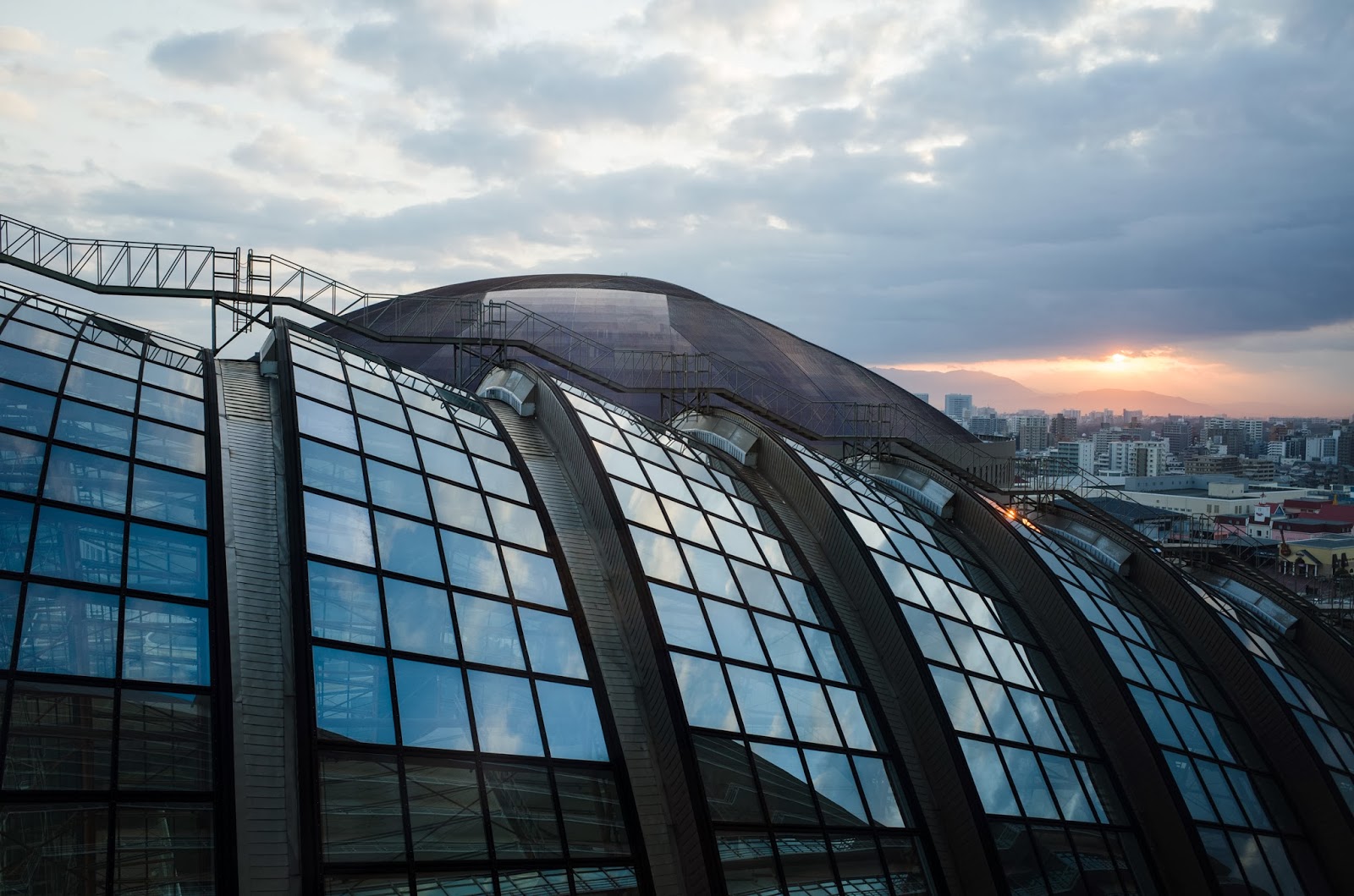Finally get to add another country to my passport. 이모, 나은누나, and I took an hour and 15 minute flight from Incheon to Fukuoka on the Kyūshū
Island. The island is south of Korea and subsequently much warmer than the
temperatures I was experiencing in Seoul. As I entered the terminal and walked
around the airport, there were no immediate indicators that I had arrived in
Japan as all the signs were generously displayed in English, Japanese, and
Korean. We traveled to Fukuoka in a group of 25 Koreans as a bus tour package that had every
destination planned out including food and lodging.


Our first destination was to Dazaifu Tenman-gū, a Shinto
Shrine in Fukuoka. During the two hours from the airport to the temple, I was
getting a sense of the building topography of Japan and how it differs slightly
from Korea’s. The most noticeable difference was the muted colors of the
industrial, commercial, and residential buildings. I recognized the large
swaths of white buildings from the airplane, but through the large bus windows,
I confirmed the predominately white color choice of Japanese buildings. The
overall architecture of the area seemed angular. I seldom saw any buildings that
embraced any curves. There were deviations from the white, narrow, and upright
rectangular commercial buildings, but that was the building plan of choice.
Dazaifu Tenman-gū
Arriving in the packed parking lot of Dazaifu Tenman-gū, we
unboarded into the sea of Japanese people. With New Year around the corner, the
Japanese packed the streets to visit the shrine to do offerings and prayers for
good fortune. We did a ten minute walk through a crowded touristy market street
that sold trinkets and various Japanese goods
We arrived at a restaurant at the end of the Temple complex
to eat a bento box. There wasn’t anything new within the bento box, but the
miso tasted different than one’s I had before. The algae taste was noticeable
stronger and gave the soup a more savory feel.
The square temple complex was packed with people; Most were
lining up in front of the main shine to do their prayers and offerings. Along
the sides of the complex were vendors selling prayers in the form of paper tabs,
little red bottles, and envelopes. Each item has been dedicated to a certain
prayer or blessing such as doing well in work, school, good health, etc. The
items are purchased for a small amount of money. Prayers and offerings are hung
or displayed on string, trees, or the temple walls.
 |
| Organized prayers |
 |
| These prayer bottles are for when one has a bad day, bad fortune, or bad feelings. The unfortunate blows into the bottle, cap it, then enjoy the worry free world. |
 |
There was a small climb up staircases under through red
gates. The painted red gates signify an entrance for higher officials.
|
 |
| Line for prayers and offering at the main shrine |
 |
| Makeshift shrine tucked in the corner of a building |
 |
| One of the many shrines around the complex |
 |
| Shinto worshippers |
 |
| Prayers |
Beppu Sulfur Houses
Another
trip on the bus brought us to a town called Beppu. Near the coastline, as we
went up the switchback roads, there would be streams of steam peeking up from
above the tree line and between houses. We got off at location that had straw
huts scattered across the property. The immediate smell of rotten eggs had
everyone clamoring. Sulfur. We learned that Beppu is a geothermal hotspot with
hot springs and sulfur gases escaping from the ground.
 |
| Sulfur clouds rising above the landscape |
The straw huts are used to collect and harvest crystallized
sulfur. With a hand on the ground anywhere at the site, I would feel warmth
coming up. The huts are closed off for collection, but there were two that were
open for visitors. The hardened sulfur covered the floor of the huts.
 |
| Everyone was encouraged to wash their hands in the warm spring water arising up. |
 |
| Hardened sulfur on the ground |
 |
| Beppu Sulfur huts |
Kamado Jigoku
Still
within Beppu, we visited Kamado Jigoku “Oven Hell.” The site had a variety of
interesting hot spring pools.
http://www.youtube.com/watch?v=CPU6FH1Jpm0
 |
| Sulfur infused steam rising |
 |
| Foot bath in the extremely hot spring water |
 |
| Drinking the spring water is said to lower your age by ten years |
 |
| Browned hardboiled eggs and Japanese Soda |
Suginoi Hotel
We arrived at Suginoi Hotel around nightfall. Our room was
complete with a tea room and yukatas for us to wear. Guests were expected to
wear the yukata, the casual summer kimono, around the hotel as it also acted as
our pass to enter the outdoor spas and saunas. We spent the whole night inside
the waters overlooking the Beppu Bay.
 |
| Arrived at nightfall |
 |
| Christmas Decorations still up. Get on your game Suginoi Hotel. Still nice though |
 |
| Required Yukatas |
Dinner buffet was at the hotel. Nuclear poisoning or not, I
was going to eat as much as possible. Soba, sashimi, sushi, fair share of Italian
food, tempura, lots of stirfry, and ice cream.
Daiso
Before we headed to dinner, we visited Daiso. 100 yen for
every item. The 99 cent store equivalent. Complete with the extreme use of
white LEDs and the unapologetically pink décor. I liked seeing the little quirks of Japanese retail.
 |
| Sensory Overload |
 |
| Details in the packaging |
 |
| Newspaper aren't meant for rolling |
 |
| Big country. Only one day down so far. |


















































